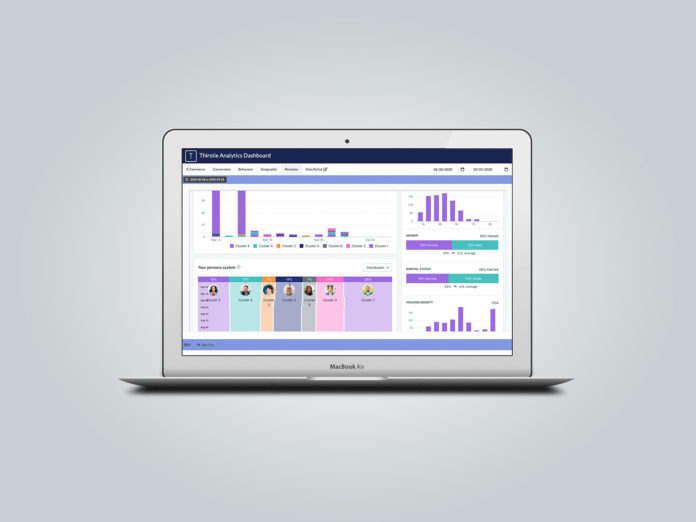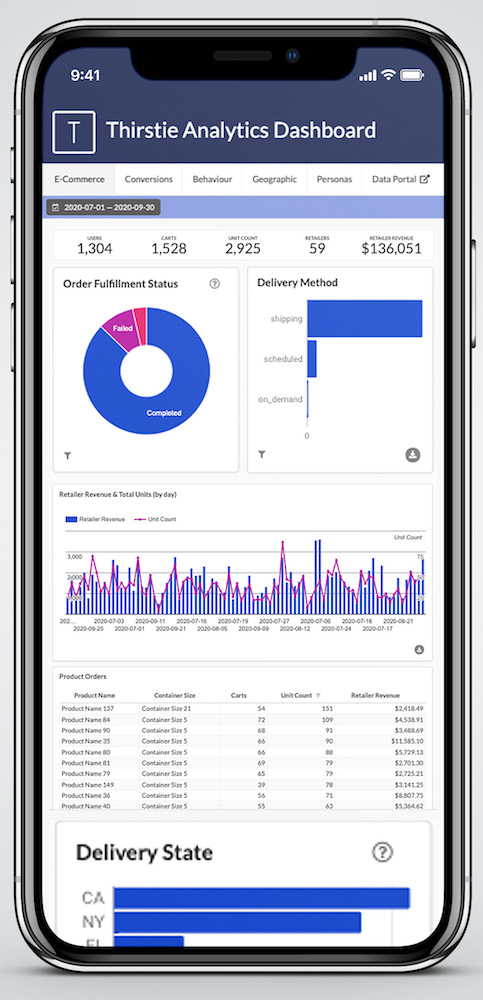Alcohol ecommerce is one of the top pandemic trends, benefiting digital delivery companies like Thirstie. Staying home, consumers discovered that they could order alcohol online, shipped expediently to their doorstep. Buying your favorite wine, spirits and beer suddenly seemed no different than ordering anything off of Amazon.
Alcohol ecommerce leapt ahead half a decade in a matter of months. Thirstie, by its own estimation, grew 600-700% since March 2020. This digital delivery company connects consumers with brands they love and retailers that carry those products.
But as Covid cases plummet and vaccines roll out, what’s next for alcohol ecommerce? How much will consumers continue to order online, versus returning to on- and off-premise? For insight into this question, we recently spoke with Devaraj Southworth, founder and CEO of Thirstie.
Beverage Wholesaler: How much did Covid-19 affect alcohol ecommerce?
Devaraj Southworth: Even before Covid, alcohol ecommerce was already trending. It was growing an estimated 22%, year-over-year, with a projected $7 to $15 billion in annual sales. Then Covid caused a huge jump in sales. In March and April of 2020, the industry saw 243% growth, according to Nielsen. Thirstie was even higher, at 600-700%. Covid-19 definitely changed the landscape.
BW: What’s next for alcohol ecommerce as Covid-19 winds down?
DS: I think there’s been a shift that I don’t think is going to subside.
Obviously the off-premise vs. on-premise numbers will adjust more back towards 50-50, when for a moment there it was more like 99-1. But our industry has changed forever. Consumers now recognize and understand that alcohol ecommerce is a thing.
And again, alcohol ecommerce was a thing before Covid. The shut down of on-premise didn’t create alcohol ecommerce — it just accelerated it.
The reason that alcohol ecommerce hasn’t become more mainstream like overseas — in France it’s like 10% of the market, while here it’s more like 1-2% — is because of legal challenges.
We are pro-legislation. At the end of the day, we want to serve consumers in a regulatory compliant manner. And the regulatory bodies understand that there are changes that need to occur, and will likely occur.
It’s impossible to predict how exactly it will evolve, but I can predict that it will change. Going back to Prohibition, regulations continue to evolve, and that’s our stance: we’re pro-regulation.
BW: What categories are trending now on alcohol ecommerce?
DS: At the premium end, tequila and mezcal are still seeing growth. Consumer are spending $40 to $50 more per order on average for those categories.
RTDs are seeing the most loyal customers. People are 30% to 40% more likely to be repeat customers for RTD brands.
BW: What’s the difference between Thirstie and Drizly?
DS: Thirstie is the Shopify for alcoholic beverages. Drizly is the Amazon. For alcohol companies, Thirstie offers a branded portion, the ability to spin off a branded digital storefront. We can do that in a matter of days. And we still have a robust retail network, like Drizly, and can offer same-day delivery in most cases.
Do we need to be at 5,000-10,000 retailers? No. What about 1,000 specialty retailers? Yes.
There are 50,000 independent producers of alcohol products. That’s a massive market of small businesses. We believe that we can democratize the industry for them. Most of these producers don’t have the means to set up in record time; they don’t know what all of that entails. We give the small brands access to ease of compliance and opportunity that the larger companies already have.
BW: How much do you rely on data in this industry?
DS: We have the ability to offer off-the-shelf data dashboards. Remember: We work for the suppliers. They want to know what ad campaigns are the most effective; they want to know behavioral analytics. They want what’s the Holy Grail for our industry: shopping cart analytics.
Brands can reach out through Thirstie with targeted messaging for consumers based on what consumers are buying. We offer an end-to-end customer experience where consumers feel like they’re interacting closely with a brand that they love.
Before alcohol ecommerce became a thing, brands were losing out on years and years of consumer insights. Now that they have access to that, brands will continue to incorporate that into their intimate relations with their consumers.
BW: What do retailers gain from alcohol ecommerce and digital delivery?
DS: E-solutions for alcohol provide additional sales for retailers, under a wider range of products and brands.
BW: What’s your longer-term outlook for alcohol ecommerce?
DS: The acceleration is evident. I think there will continue to be more sales channels digitally, and distributors will adjust accordingly. That likely means a broader inventory of products from more producers.
For consumers, they’ll have deeper relationships with more brands.
There’s a lot of digital infrastructure in place. There’s a foundation for a ton of growth ahead.
This interview was edited and condensed for publication.
Kyle Swartz is editor of Beverage Wholesaler. Reach him at kswartz@epgmediallc.com or on Twitter @kswartzz.











